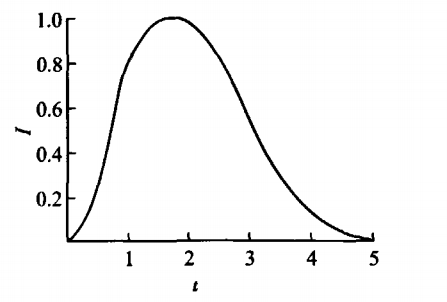Output Characteristic Of Nd:YAG Laser
This article mainly introduces the pulsed Nd:YAG laser, the output characteristics of the pulsed Nd:YAG laser, and the research on the pulse spectral characteristics.
1. Pulsed Nd:YAG Laser
YAG laser is a solid-state laser based on yttrium aluminum garnet crystal. Nd:YAG laser mainly includes circulating water cooling system, optical resonator, Q-switch and flash lamp pump.
Circulating water cooling system
The Nd:YAG laser adopts liquid cooling technology. The main purpose of liquid cooling is to dissipate the heat generated in the laser medium, pump source and laser cavity.
The coolant also has other functions, such as index matching, reducing internal reflections that lead to de-pumped modes, and it can also act as a filter to eliminate unwanted pump radiation.
Optical resonator
The main function of the optical resonator is to preferentially amplify the optical signal of a certain propagation direction and frequency, while suppressing the optical signal of other directions and frequencies. For this purpose, two mirrors parallel to each other and perpendicular to the axis of the working medium can be placed at both ends of the working medium, and the two mirrors and the working medium together constitute an optical resonant cavity. All photons that do not move along the axis of the resonator quickly escape out of the resonator, while photons that move along the axis can run back and forth in the cavity continuously, and continuously encounter stimulated atoms to generate stimulated radiation.
Q switch
In order to generate a giant pulse, the laser light needs to be released for a short period of time.
Q-switching is an operation widely used to generate giant pulsed power lasers. In the operation of Q-switching, the energy is stored in the amplifying medium by means of optical pumping, and the Q value in the cavity is reduced at the same time, preventing the occurrence of laser oscillation. Although the energy storage and gain of the active medium are large, the cavity loss is also large, so the threshold value is very high, which is far beyond the usual threshold value for laser generation, thus suppressing the onset of vibration and causing a large number of inversion particles on the laser to accumulate. When suddenly restored to high Q, the stored energy is released in very short pulses of light. The energy storage of the active medium builds up a high gain, releasing energy in a very short time. The peak power of the generated pulses is higher than ordinary
The peak power of long pulses is orders of magnitude higher.
Flash Pump
The emission spectrum of the solid-state laser pump source must match the absorption spectrum of the laser medium. The pump source inputs continuous or pulsed electrical energy and converts the electrical energy into optical radiation. A highly reflective sealed enclosure or optical system couples the optical radiation from the pump source into the lasing material. The optical pumping system of solid-state lasers consists of three parts, namely pumping source, power supply, and pumping cavity or radiation conversion optical device.
2. Pulsed Nd:YAG laser output characteristics
Research on the polarization of YAG Laser
(1) Theoretical basis. YAG lasers are formed due to the stimulated emission of atoms. It means that if the energy of the incident photon is equal to the corresponding energy level difference, and there are atoms at the high energy level, the electromagnetic field of the incident photon will cause the atom to transition from the high energy level to the low energy level, and at the same time emit a frequency with the incident photon. , photons with exactly the same phase, polarization direction, and propagation direction.
(2) Experimental design. Let the laser pulse pass through the polarizer, rotate the polarizer, if the light intensity does not change, then it is natural light; if the light intensity is zero when the polarizer is turned to a certain angle, it is linearly polarized light; if the polarizer is rotated during the process , the light intensity will appear the strongest and the weakest, and the light intensity is not zero, then it is incompletely polarized light.
(3) Experimental results and analysis. When the polarizer is rotated, the light intensity changes, but the light intensity is always not zero, which shows that it is incompletely polarized light. The experimental results are shown in Figure 1. The reason why incompletely polarized light is generated is mainly due to the properties of Nd:YAG and the asymmetry of the pump cavity. First, although Nd:YAG crystal has no birefringence and anisotropy transmission phenomenon under the action of low light intensity and small signal, it will have obvious anisotropy after saturable absorption, which leads to Nd:YAG passively Q-switched laser. Polarized output appears. Second, the spatial asymmetry of the pump cavity structure is also one of the causes of incompletely polarized light.
Study on Pulse Spectral Characteristics
(1) Theoretical basis.
Under normal operating conditions, the Nd:YAG laser produces the strongest transition at a wavelength of 1.0641 μm at room temperature, while more than 20 other transitions are also produced.
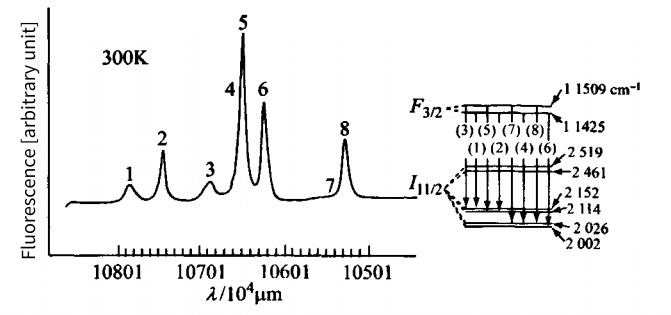
We used a prism to explore the color composition of laser pulses. The following figure is a schematic diagram of the research on the color composition of YAG laser. The laser is diverged through the lens, and after passing through the slit, it is dispersed into bright strips of different colors under the action of the prism.

The light spot on the light screen captured by extending the camera exposure time is shown in the figure below. It can be seen from the figure that the pulsed laser is complex light, and in the visible light range, it consists of red, yellow, green, blue and other colors. The chromaticity of the laser is related to the various transitions that occur when the laser is lasing. Since laser light is mainly produced by stimulated radiation, photons with different energies are produced when different transitions occur simultaneously. It can be seen from E=hv that this produces light of different frequencies, that is, light of different wavelengths. At the same time, since the length of the resonant cavity is much larger than the wavelength of the light wave, the number of wavelengths allowed to exist in the resonant cavity is very large. When some of this light has wavelengths in the visible range, it is observed by our naked eye.
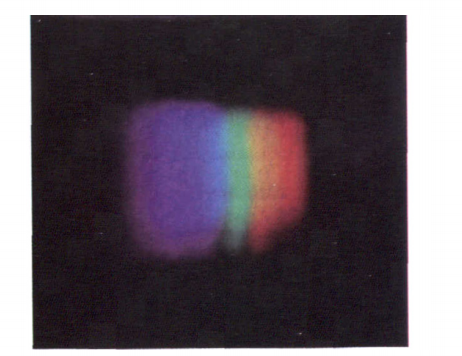
3. Laser pulse width measurement
Theoretical Basis
The YAG laser uses the Q modulation method to obtain giant pulses. That is, the Q value of the resonant cavity is changed according to a prescribed program by a certain method. At the beginning of the excitation of the optical pump, the optical cavity has a low Q value first, and the laser cannot generate laser oscillation due to the high threshold, so the number of particles in the metastable state can be accumulated to a higher level. Then at an appropriate moment, the Q value of the cavity is suddenly increased, and the threshold value is also suddenly decreased. At this time, the inversion population greatly exceeds the threshold value, and the stimulated emission increases very rapidly. Therefore, in a very short time, the energy of most of the particles stored in the upper energy level is converted into laser energy, and a strong laser giant pulse is output at the output end. In this experiment, a rotating mechanical Q-switch is used to obtain a pulsed laser by adjusting the angle of the mirror.
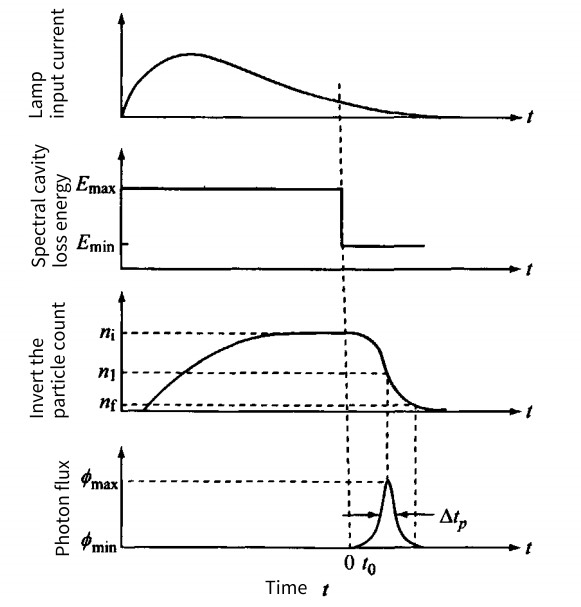
Before time 0, the Q switch is turned off, and the number of inversion particles gradually increases until it reaches saturation. At time 0, the Q-switch is suddenly turned on, the threshold of the resonator is suddenly lowered, and the stimulated emission increases rapidly, forming a sharp pulse until the inversion particles are depleted. In actual measurement, the pulse width is often larger than the theoretical value, and the peak power is often smaller than the theoretical value. The main reason is that the pulse establishment time of different parts of the working substance is different, and the pulse establishment at the center is faster. Secondly, the Q-switch does not complete the action instantaneously but takes a certain amount of time, so the speed of the Q-switch action will also affect the giant pulse width and peak power. Through the experimental measurement of the giant pulse width, it is only necessary to measure the change of the pulse light intensity with time, and draw a curve of the light intensity change with time, and then the pulse width can be read out from the graph. Because the exposure of the photographic paper is proportional to the light intensity in the same time period, we designed an experiment: the change of the exposure amount was used to show the change of the light intensity.
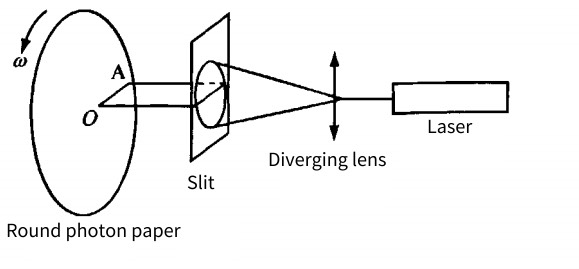
In a darkroom environment, the circular photographic paper rotates at high speed with an angular velocity ω. The single pulse emitted by the laser passes through the diverging lens to form a circular light spot on the light baffle. A slit is opened in the light barrier, and light passes through the slit to expose the high-speed rotating photographic paper. If the pulse duration is Δt, then the angle Φ=ω·Δt that the photo paper rotates during the time Δt.
If the radius of point A is r, a black stripe of width d will be left on the photographic paper. The pulse duration Δt=d/rw is obtained from the above data.
Since exposure is proportional to light intensity, a simulated curve of light intensity versus time can be drawn according to the grayscale changes of the stripes left on the photographic paper.
The equipment used in the experiment: high-speed motor; regulated power supply (rated voltage 12V); rated speed of phase paper 6000r/min; baffle with a slit width of about 0.3mm; D-72 most shadow liquid and F-5 acid hardness film fixer.
The measured fringes after laser pulse exposure are shown in Figure 7. Among them, the top of the stripes on the photo paper in the left picture is about 6.4cm away from the center of the circle, the scale below is 1mm per grid, and the speed of the photo paper is 6000r/min. Due to the fact that the incident light is not parallel light and the diffraction effect of the single slit, the actual observed fringe width is larger than the slit width when the photographic paper is stationary, as shown in the figure on the right, the stationary fringe width d. A 0.9ram. Also because the measured actual stripe width d0 = 4.7mm.
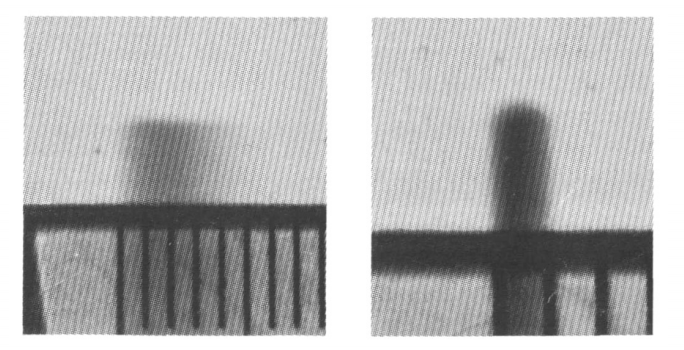
Finally, according to the exposure and scale of the photographic paper, a simulation curve of the light intensity changing with time can be roughly made, as shown in the figure below. Among them, the x direction is the time size, which is simulated by dividing the pulse duration by 5 grids on the scale in Figure 8. The Y direction is the light intensity.
